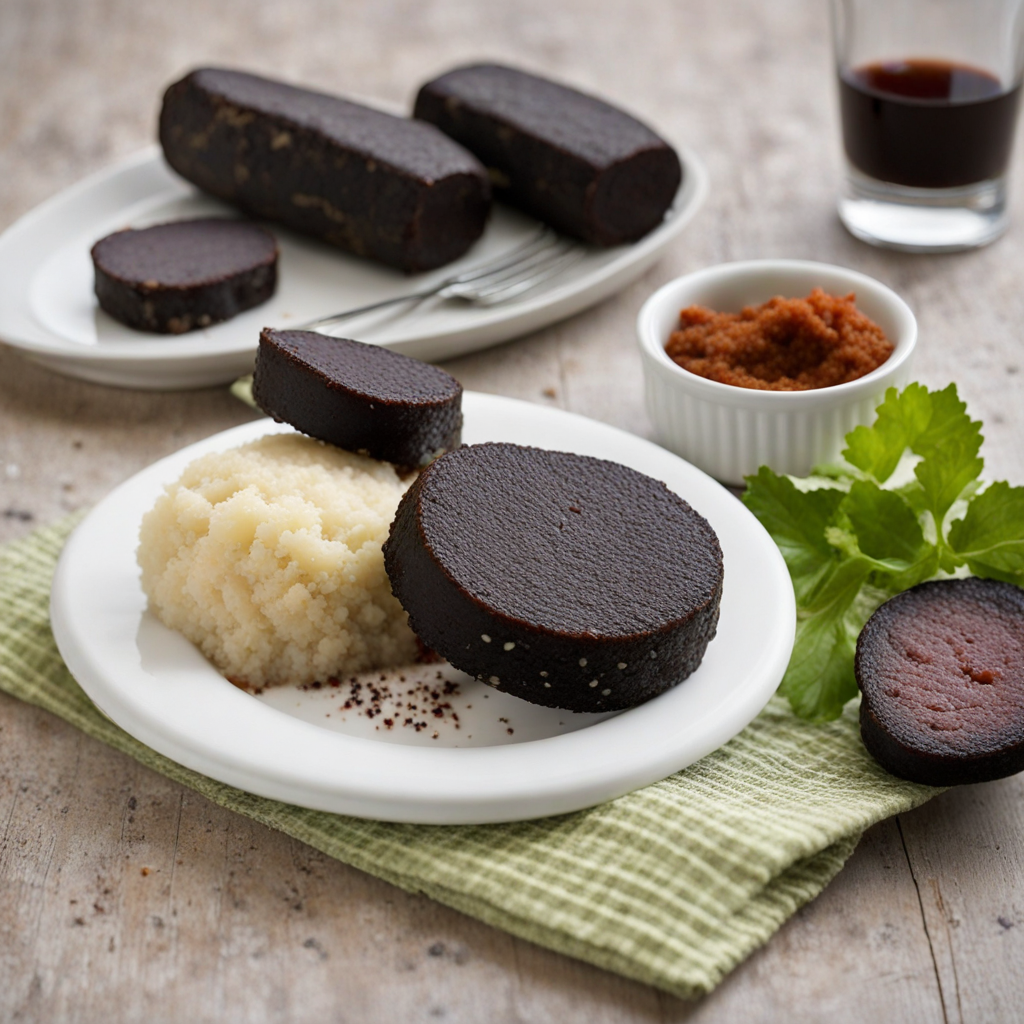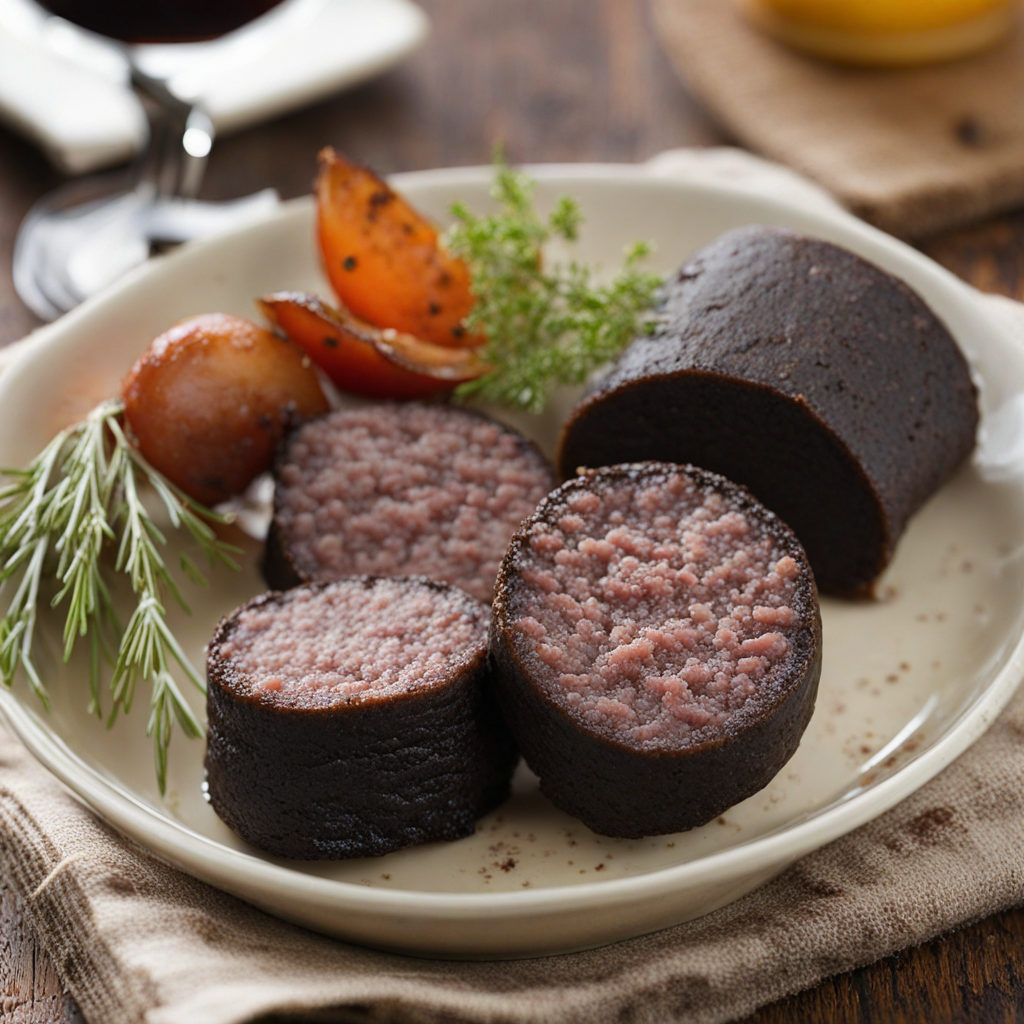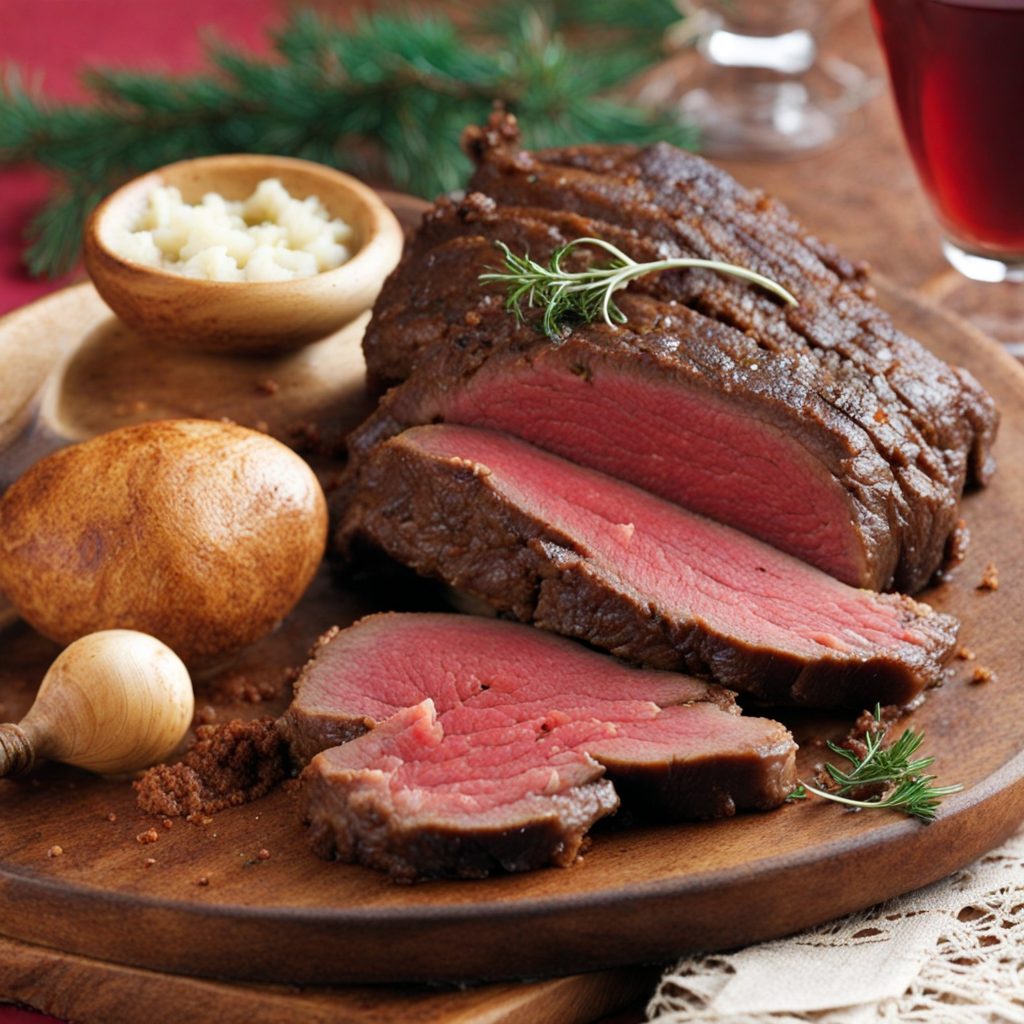Drisheen
Driseán, often referred to as traditional Irish bread pudding, is a delightful dessert that showcases the rustic culinary heritage of Ireland. It has a rich history rooted in the country’s agrarian past, where resourcefulness in the kitchen was paramount. Driseán was typically made as a way to utilize leftover bread, often stale, ensuring that no food went to waste. This dish reflects the Irish ethos of valuing simple, hearty ingredients that are both filling and comforting. The flavor profile of Driseán is a harmonious blend of sweet and savory elements, with the primary taste coming from the bread itself. Traditional recipes often incorporate a variety of breads, including white and brown soda bread, which lends a unique texture and flavor. The addition of ingredients such as dried fruits—particularly currants or raisins—infuses the pudding with sweetness and a slight chewiness. Spices like cinnamon and nutmeg commonly enhance the dish, imparting warmth and depth. The contrasting textures of the moist pudding and the occasional crunch from the crusted top create a delightful eating experience. Preparation of Driseán is relatively straightforward, making it accessible for home cooks. The base begins with stale bread, which is torn or cut into small pieces. This bread is then soaked in a mixture of milk or cream, allowing it to absorb the liquid and soften. Once the bread is sufficiently soaked, it is combined with eggs, sugar, and a medley of spices. The dried fruits are folded in at this stage, ensuring that
How It Became This Dish
Origin of Driseán Driseán, often referred to as "drisheen" in English, is a traditional Irish blood pudding that has its roots in the rich and diverse culinary heritage of Ireland. The name itself derives from the Irish word "dris," meaning "bramble" or "blackberry," although the connection between the name and the dish remains somewhat ambiguous. Driseán is primarily associated with the southern regions of Ireland, particularly County Kerry and County Cork, where it has been a staple in local diets for centuries. It is believed that the practice of making blood pudding dates back to the early medieval period, coinciding with the introduction of pig farming in Ireland. The earliest records of blood pudding can be traced to the Romans, who had their own versions of blood sausage. However, it was in Ireland that the dish evolved into its unique form, utilizing local ingredients and traditional methods of preparation. Driseán is made primarily from pig's blood, suet, and a mixture of seasonings, often including herbs like thyme and parsley. The use of barley or oatmeal as a filler ingredient gives it a distinctive texture and enhances its flavor profile. This method of utilizing the whole animal was not only practical during times of scarcity but also reflected the Irish ethos of maximizing resources. \n\n Cultural Significance of Driseán Driseán holds a special place in the hearts of the Irish, particularly in rural communities where traditional foods are deeply embedded in local culture. It is often associated with communal gatherings, family feasts, and festivals, where it is served alongside other traditional dishes like soda bread and boxty. The preparation of driseán is often a family affair, passed down through generations, with each family having its own secret recipe and techniques. This communal aspect of cooking reinforces social bonds and serves as a way to preserve culinary traditions. In addition to its social significance, driseán also carries a rich tapestry of folklore and mythology. In many regions of Ireland, the making of blood pudding is accompanied by various rituals and beliefs. For instance, it is often believed that consuming driseán can bring good luck or ward off evil spirits. During certain festivals, particularly around the harvest season, driseán is prepared as part of rituals that celebrate abundance and community. This highlights the dish's role as not just sustenance but also as a symbol of cultural identity and heritage. \n\n Development Over Time As Ireland underwent various social, political, and economic changes, so too did the preparation and consumption of driseán. The 19th century, marked by the Great Famine, saw significant shifts in food practices across the country. While many traditional foods fell out of favor or became less accessible due to poverty, driseán remained a vital part of the diet for many rural families. It was seen as a cost-effective source of nutrition, providing essential protein during times of hardship. The Industrial Revolution further transformed food production and consumption patterns in Ireland. With urbanization, many people moved from rural areas to cities, leading to a decline in the traditional methods of food preparation. However, driseán found a new audience in urban centers, where it began to be produced commercially. Local butchers started to create their own versions of the dish, often adapting the recipe to meet the tastes of a broader market. This commercialization helped to ensure the survival of driseán, albeit sometimes at the expense of its traditional roots. \n\n Modern Interpretations In contemporary Ireland, driseán is experiencing a renaissance as part of a wider movement to celebrate and revive traditional Irish cuisine. Chefs and food enthusiasts are increasingly turning to local and heritage foods, and driseán has gained recognition as a gourmet dish. Artisan producers are now crafting high-quality versions of blood pudding, often using ethically sourced ingredients and traditional methods. This has led to a renewed appreciation for driseán, not only as a nostalgic comfort food but also as a dish that represents the rich agricultural heritage of Ireland. Moreover, driseán has found its way onto the menus of upscale restaurants and gastropubs, where it is often paired with modern accompaniments, such as apple chutney or roasted vegetables. This blend of tradition and innovation has sparked interest among food tourists and locals alike, leading to culinary festivals that celebrate Irish blood pudding. Events like the "Taste of Cork" and "Kerry Food Festival" often feature driseán, highlighting its role in the evolving narrative of Irish food culture. \n\n Driseán in Irish Diaspora As the Irish diaspora grew throughout the 19th and 20th centuries, with waves of emigration to countries such as the United States, Canada, and Australia, traditional foods, including driseán, traveled with them. In these new lands, Irish immigrants sought to recreate the flavors of home, leading to adaptations of driseán. While the traditional ingredients might not have always been available, the spirit of the dish endured. In places like Boston and New York, Irish pubs and restaurants began to serve driseán, introducing it to a new audience and fostering a sense of connection to Irish heritage among the diaspora. Today, many Irish expatriates and their descendants continue to seek out driseán, whether through family recipes or commercially produced versions. This global spread of driseán has contributed to a broader appreciation of Irish culinary traditions, allowing them to flourish beyond their geographical origins. \n\n Conclusion Driseán is more than just a dish; it encapsulates a rich history that reflects the resilience and creativity of the Irish people. From its humble origins as a necessity born of resourcefulness to its current status as a sought-after delicacy, driseán tells the story of Ireland itself. As interest in traditional foods continues to grow, driseán stands as a testament to the enduring legacy of Irish culinary art, bridging the past and present while connecting communities across the globe.
You may like
Discover local flavors from Ireland







